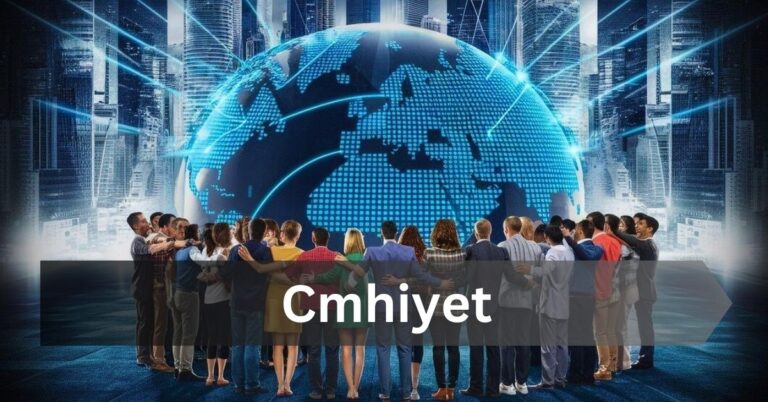Introduction to Cmhiyet
The term “cmhiyet” may seem unfamiliar to many, but its roots lie deep within cultural, philosophical, and social contexts. This article delves into the essence of cmhiyet, its implications, and its relevance in today’s world. By exploring its various dimensions, we can uncover the richness of this concept and how it shapes our understanding of identity and community.
Defining Cmhiyet
Cmhiyet can be broadly defined as the amalgamation of individual and collective identities that influence how people perceive themselves and others within a society. This concept is particularly relevant in multicultural environments where diverse backgrounds converge, creating a tapestry of beliefs, practices, and traditions.
The Etymology of Cmhiyet
While “cmhiyet” may not have a direct translation in every language, its essence can be found in terms such as identity, belonging, and community. Understanding its etymology is crucial as it sheds light on how this concept has evolved over time and how it is perceived in various cultural contexts.
The Importance of Cmhiyet in Modern Society
In an era marked by globalization and rapid technological advancement, the relevance of cmhiyet cannot be overstated. As societies become more interconnected, individuals often find themselves navigating multiple identities. This can lead to a richer experience of self but also presents challenges, such as identity conflict and cultural dilution.
The Layers of Cmhiyet
Individual Identity
At the core of cmhiyet is the concept of individual identity. Each person carries a unique set of experiences, beliefs, and values that shape their perception of self. Understanding one’s individual identity is crucial for personal development and emotional well-being.
The Role of Personal Experiences
Personal experiences play a pivotal role in shaping identity. Factors such as family background, education, and personal relationships contribute to how individuals perceive themselves. This unique narrative is what differentiates one person from another within the broader context of cmhiyet.
Collective Identity
In contrast to individual identity, collective identity refers to the shared characteristics and experiences of a group. This can encompass various dimensions, including ethnicity, religion, nationality, and more. Collective identity often fosters a sense of belonging and solidarity among group members.
The Significance of Community
Communities play a vital role in the formation of collective identity. Shared values, traditions, and experiences bind individuals together, creating a sense of belonging that is essential for social cohesion. The interplay between individual and collective identities is a dynamic process that continues to evolve.
The Intersection of Cmhiyet and Culture
Cultural Influence on Identity
Culture profoundly influences both individual and collective identities. Cultural norms, practices, and beliefs shape how people interact with one another and their environment. Understanding cmhiyet within a cultural context provides insights into how identities are constructed and negotiated.
The Role of Language
Language is a key component of culture and plays a significant role in expressing identity. It not only facilitates communication but also carries cultural nuances that shape our understanding of self and others. In a multicultural world, language can be both a bridge and a barrier, influencing how cmhiyet is perceived and experienced.
Globalization and Its Impact on Cmhiyet
Globalization has led to increased interaction among diverse cultures, presenting both opportunities and challenges. On one hand, it allows for the exchange of ideas, traditions, and practices, enriching our understanding of cmhiyet. On the other hand, it can lead to cultural homogenization, where unique identities are overshadowed by dominant cultures.
Challenges of Cmhiyet in Contemporary Society
Identity Conflict
As individuals navigate multiple identities, they may experience identity conflict, where their personal beliefs clash with societal expectations or norms. This can lead to feelings of isolation, confusion, and frustration. Understanding cmhiyet can provide a framework for individuals to reconcile these conflicts and find a harmonious balance.
Cultural Dilution
The influence of globalization also raises concerns about cultural dilution. As dominant cultures permeate various aspects of life, unique identities may be at risk of being lost. Preserving cultural heritage while embracing change is a delicate balance that societies must navigate.
Embracing Cmhiyet: Strategies for Individuals and Communities
Fostering Open Dialogue
Encouraging open dialogue within communities can promote understanding and acceptance of diverse identities. Creating spaces for discussion allows individuals to share their experiences and perspectives, fostering a sense of belonging and solidarity.
Celebrating Diversity
Celebrating diversity is crucial for strengthening cmhiyet. Recognizing and honoring the unique contributions of various cultural groups can enhance social cohesion and promote a richer understanding of identity. Festivals, cultural events, and educational programs can serve as platforms for this celebration.
Building Inclusive Communities
Inclusive communities that embrace diversity are essential for nurturing cmhiyet. This involves actively promoting equality, understanding, and acceptance among different cultural groups. Policies and practices that prioritize inclusivity can help mitigate the challenges posed by identity conflict and cultural dilution.
Also Read: Leo Soulas Entrepreneur: A Journey of Innovation and Resilience
Conclusion
Cmhiyet is a multifaceted concept that encapsulates the complexity of identity in an increasingly interconnected world. By understanding its dimensions—individual and collective identities, cultural influences, and the impact of globalization—we can navigate the challenges it presents. Embracing cmhiyet allows us to foster inclusive communities that celebrate diversity and promote a deeper understanding of ourselves and others.


